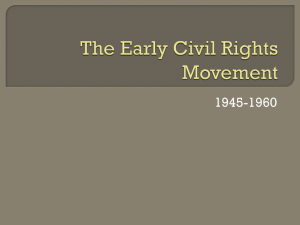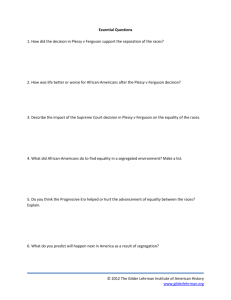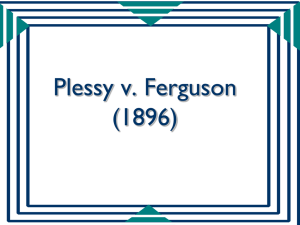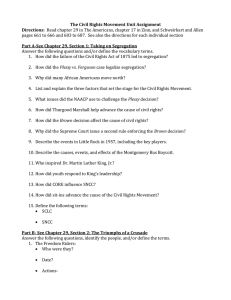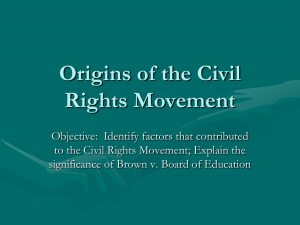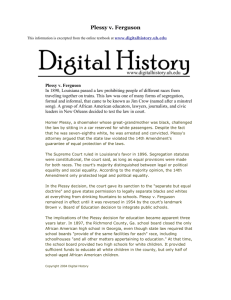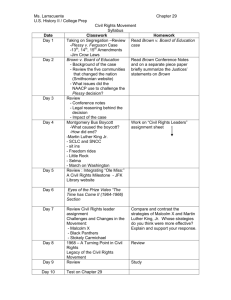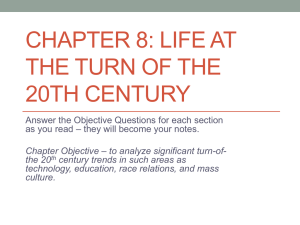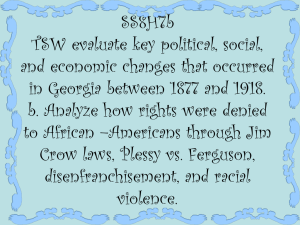Brown vs. Board of Education - FRINK-NHD
advertisement
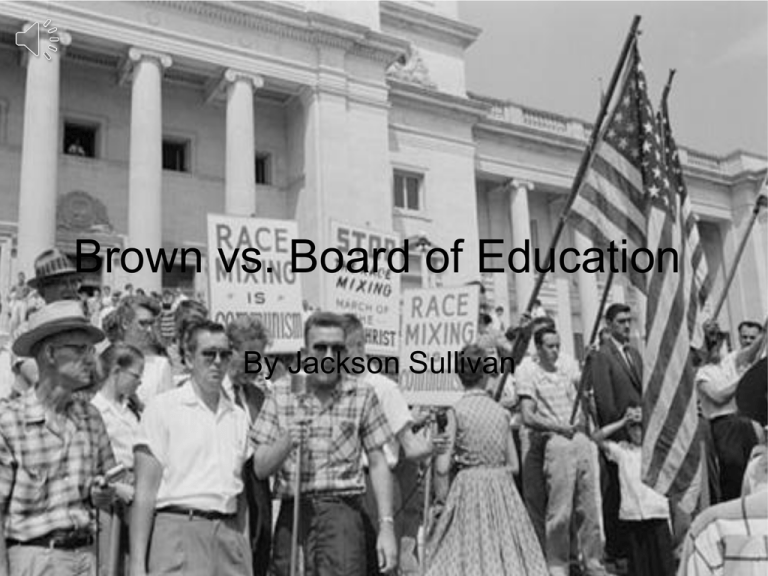
Brown vs. Board of Education By Jackson Sullivan People Who Play a Role in the Case • Oliver Brown • Linda Brown • Board of Education for the City of Topeka Kansas The Problem Linda Brown, Oliver Brown's daughter, had to go almost a mile to get to the nearest black school, instead of going to the white school only seven blocks away where all of her white neighborhood friends went to school. The separation of white students and black students concerned a number of the African American families in the City of Topeka. The law at that time allowed segregation if the places were equal. Segregation Segregation was the problem, or law that caused the whole case to occur. Segregation is the forced separation of different racial groups in a country, establishment, or community. For example, African Americans had different water fountains that they had to drink out of. Other examples would be separate seating on buses, different rooms in restaurants and movie theaters, and in this case, separate schools. The law of segregation led to many disputes and boycotts. Plessy vs. Ferguson Mr. Homer Plessy, an African American man, who lived in Louisiana got on a white only railroad car. Mr. Plessy was asked to move to the black railroad car, but he wouldn’t go. Mr. Plessy was arrested and convicted. Mr. Plessy argued that the separate train cars violated his rights for equal protection under the law. Plessy vs. Ferguson The Supreme Court of the United States heard the Plessy vs. Ferguson case in 1896. The Supreme Court held that as long as the separate places for different races were the same then it was legal, and the separation did not violate the Fourteenth Amendment which requires equal protection under the law for all citizens. This was called the “separate but equal” law. Brown’s Action and Reformation Mr. Brown along with other African American families in Topeka challenged the separate but equal law. Mr. Brown and those families argued that the forced segregation, even if equal, promoted racism and a poor learning environment for different races. The United States Supreme Court overturned the Plessy decision and held that separate but equal facilities in public education were not proper. Reactions and Revolutions After the case was closed, most reactions were happy. It also created many problems in the society, and Oliver received many threats. Overall the impact was great, and many people were greatly influenced by the case. This case changed the way many African Americans lived, and changed the way African Americans were educated. Brown vs. Board of Education is commonly referred to as the start of the Civil Rights Movement and many of the civil rights changes in the 1960s and 1970s. The case served as an inspiration to Civil Rights Leaders like Rosa Parks and Dr. Martin Luther King Jr. One could logically argue the election of the first African American President, Barack Obama, could be related to the decision in Brown vs. Board of Education.
